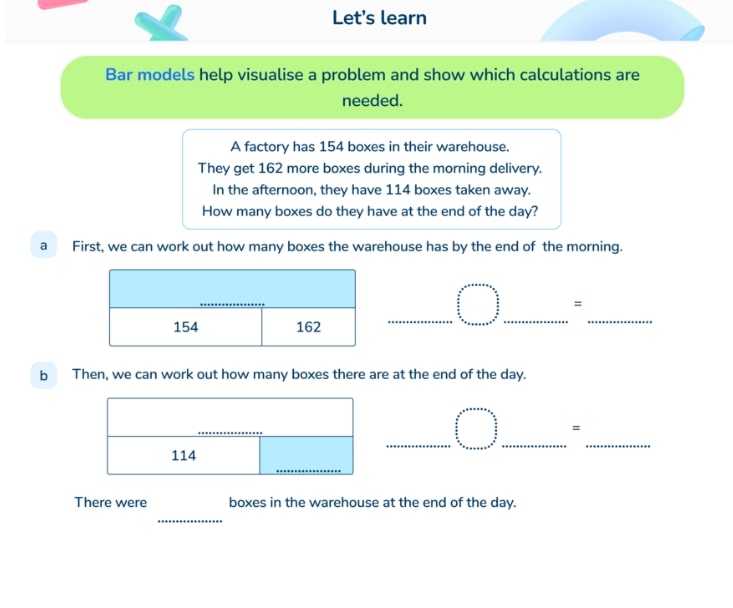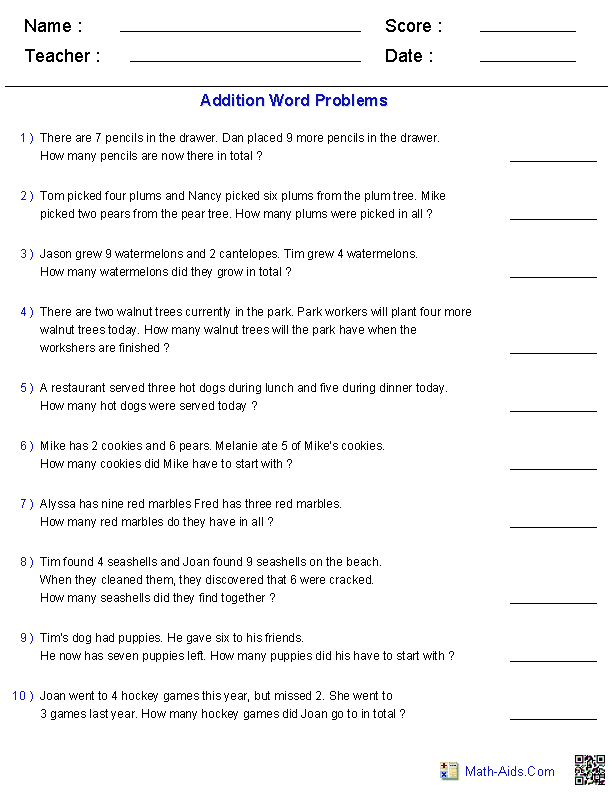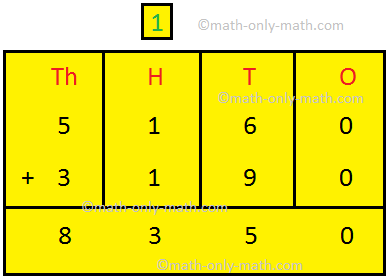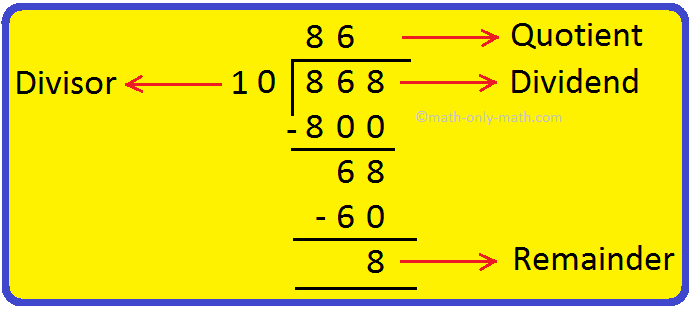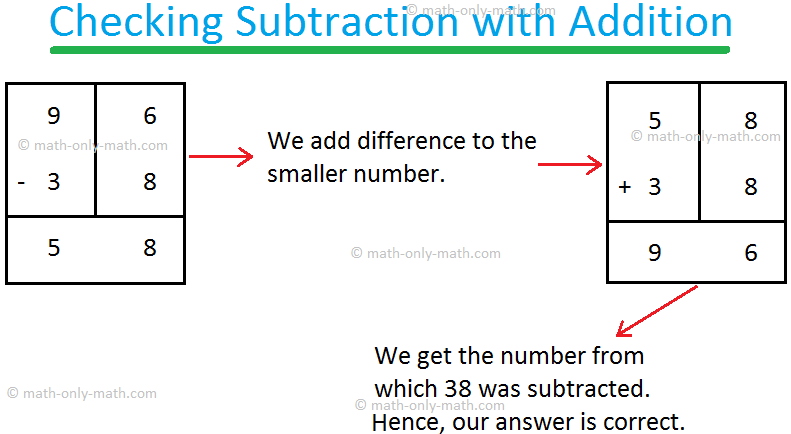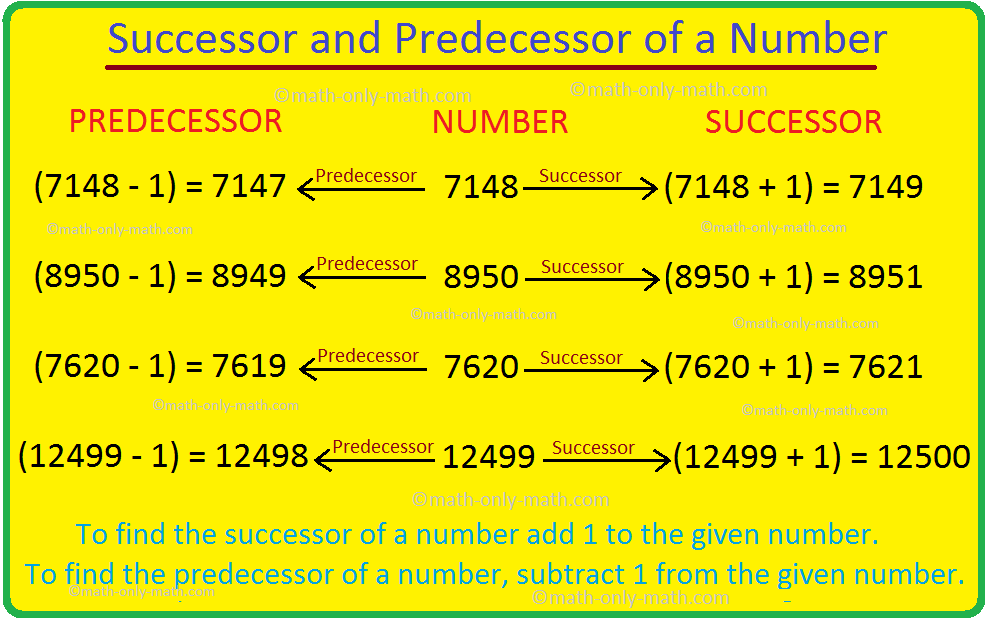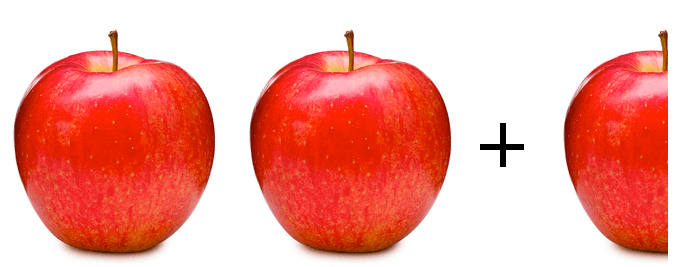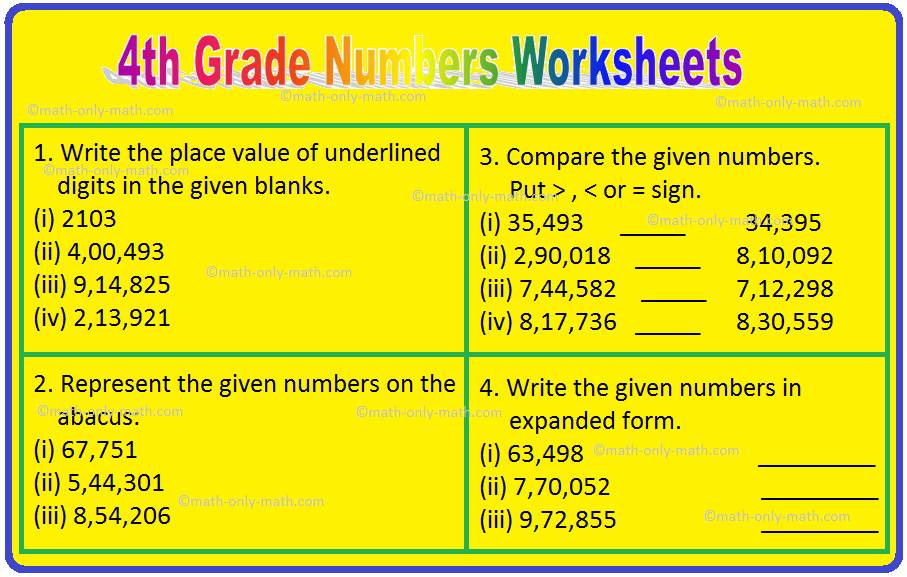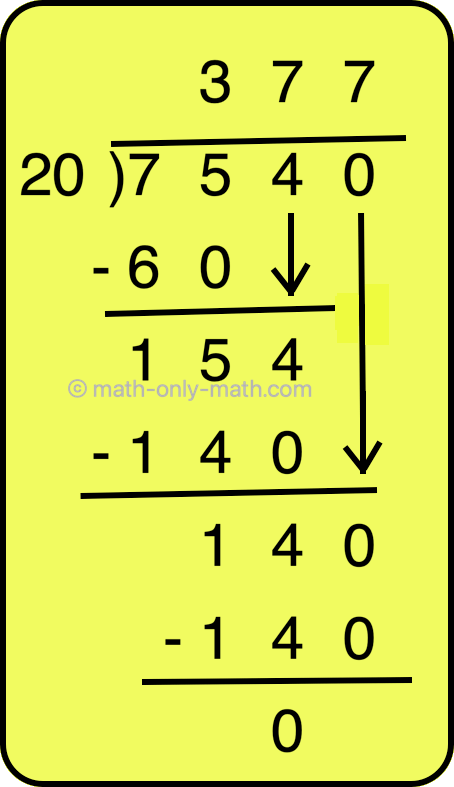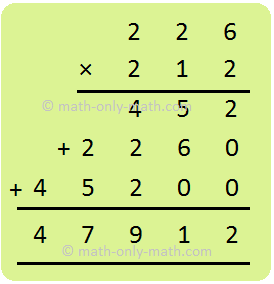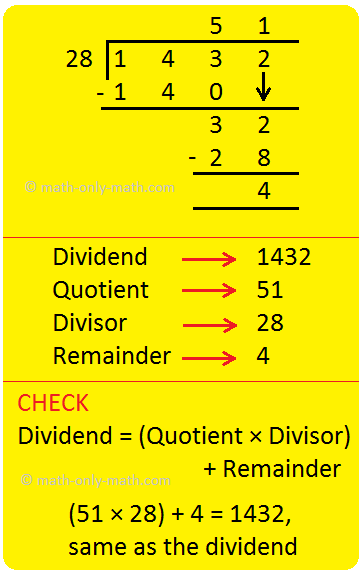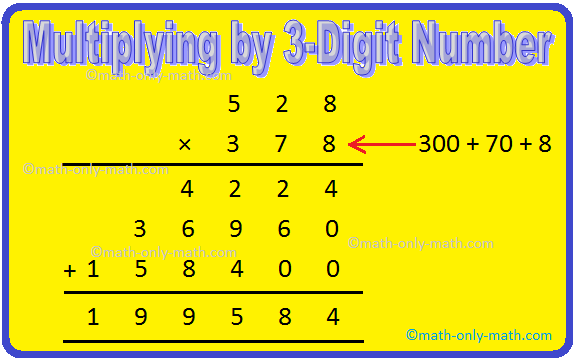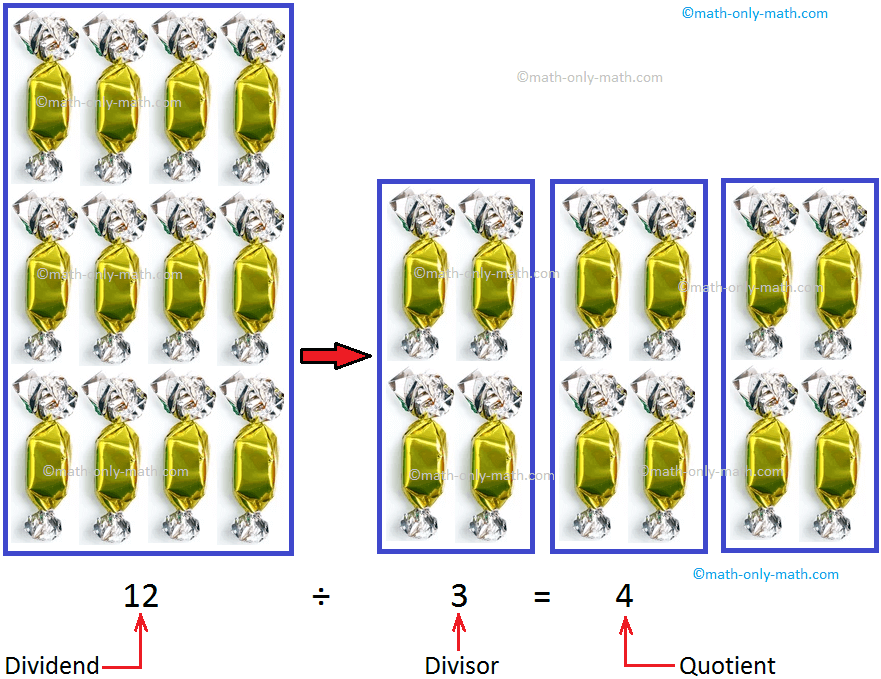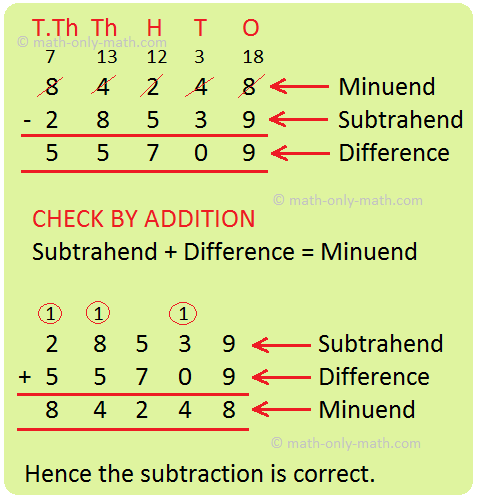Addition word problems appear throughout KS1 and KS2. Children are introduced to simple addition and subtraction word problems in the early years. This knowledge is then built upon throughout primary school, right up to Year 6, when pupils work with complex multi-step word problems involving large whole numbers and decimal numbers.
In the early stages, in Key Stage one and lower Key Stage two, addition word problems are taught through the use of concrete resources and visual images. As pupils become more confident with the formal written methods, children progress to use these to help solve more complex addition and subtraction word problems.
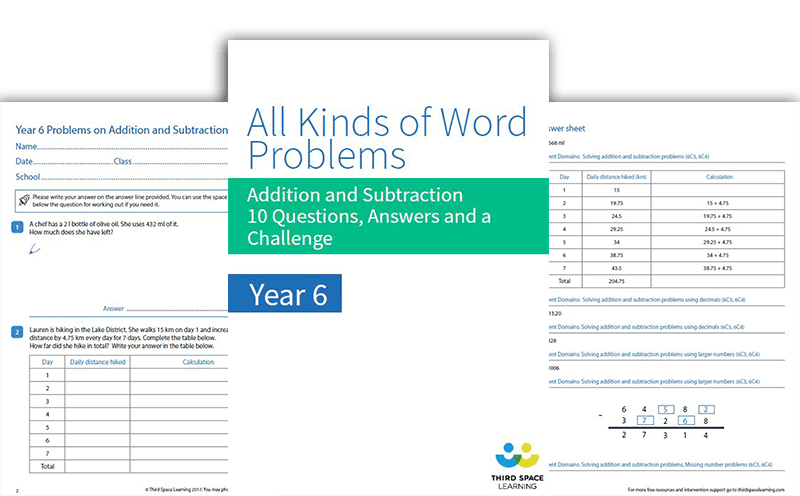
All Kinds of Word Problems Addition and Subtraction
Download this free, printable pack of addition word problems worksheets to help your class to develop their addition and problem solving skills.
Children benefit from regular exposure to word problems, alongside any fluency work they are doing. To help you with this, we have put together a collection of 25 addition word problems with answer keys, which can be used with pupils from Year 2 to Year 6.
Addition word problems in the National Curriculum
Addition word problems in Year 1
Pupils in Year 1 are introduced to simple one-step problems involving place value addition and subtraction word problems, through the use of concrete objects, pictorial representations and missing number problems. At this stage, children should be memorising and reasoning with number bonds to 10 and 20. They also need to understand the effect of adding zero.
Addition word problems in Year 2
In Year 2, pupils continue to use concrete objects and pictorial representations to solve addition problems, including those involving numbers, quantities, measures and simple money word problems. They are also expected to apply their increasing knowledge of mental and written methods, using one and two-digit numbers. Pupils start working on basic written addition and are introduced to the concept of regrouping.
Addition word problems in Year 3
By Year 3, pupils are starting to tackle more complex addition word problems. They begin to use written methods to add 3-digit numbers, using formal column method for addition. Pupils also begin solving addition problems involving fractions, in addition to building on their mental addition skills to add a three-digit number and ones, tens and hundreds.
Addition word problems in Year 4
Pupils in Year 4 progress to solving two-step problems in contexts, deciding which operations and methods to use and why. They are also beginning to work with larger numbers, adding up to four digits using the formal written method of column addition.
Addition word problems in Year 5
By Year 5, pupils are solving multi-step word problems in contexts. They add whole numbers with more than four digits and decimal numbers, using formal written methods. Children are also adding increasingly larger numbers mentally.
Third Space Learning’s online one-to-one tutoring programmes work with students to fill their learning gaps and build confidence in maths. Tailored to the needs of each student, Third Space Learning’s tutoring programmes offer students more opportunities to practice their maths skills and reach their year group standard.
covering multi-step addition and subtraction word problems
Addition word problems in Year 6
Pupils in Year 6 continue to work with larger numbers and decimals, solving increasingly complex multi-step problems, deciding which operations to use and why. By this stage students should have a solid grasp of the written methods for all four operations.
Why are word problems important for children’s understanding of addition
Word problems help children to make sense of addition. In the Early Years, simple story problems aid understanding of what is being asked, alongside the use of concrete resources and visual images. Real-life word problems are an important element of the maths curriculum for children throughout the school, giving them the opportunity to put the addition skills they have learnt into context, to understand how they can be used in the outside world.
How to teach addition word problem solving in primary school
Pupils need to be taught how to approach word problems, beginning by reading the questions carefully and making sure they fully understand what is being asked. The next step is to determine what calculation is needed and whether there are concrete resources or pictorial representations they can use to help solve it, or if
Here is an example:
There were 3,756 people on a cruise ship.
456 people get on after the first week, whilst 623 get off.
How many passengers are on board the ship now after the first week?
How to solve:
What do you already know?
- There are 3,756 on the cruise ship at the start of the journey.
- 456 people get on after the first week, therefore we need to add 456 to 3,746. This gives us a total of 4,212 people
- 623 people get off, so we need to subtract 623 from the total number of passengers now on the boat. When we subtract 623 from 4,212, we get a total of 3,589.
How can this be represented pictorially?
- We can draw 2 bar models to represent this problem.
- The number of passengers who got on the ship after the first week is added to the total number of people on the boat at the start of the trip.
- We then draw a second bar model to show how many passengers were left on the ship once the 623 passengers got off after the first week.
Addition word problems for year 2
Addition word problems in Year 2 require pupils to work with 1 and 2-digit numbers. At this stage it is important children are working with concrete resources to support their understanding. Children also begin to learn how to check their answers by finding the inverse of calculations.
Year 2 addition question 1
Maise has 14 crayons. Her friend gives her 8 more.
How many crayons does Maisie have now?
Answer: 22 crayons
14 + 8 = 22
Year 2 addition question 2
Hamza buys a large pack of biscuits, whilst his sister buys a small pack.
The large pack contains 18 biscuits, whilst the small pack contains 8.
How many biscuits does Hamza and his sister have altogether?
Answer: 26 biscuits
18 + 8 = 26
Year 2 addition question 3
13 children sign up for the after school football club and 11 sign up for the netball club.
How many children sign up altogether?
Answer: 24 children
13 + 11 = 24
Year 2 addition question 4
Amal collects 34 conkers. Her brother finds 7 more and adds them to her collection.
How many conkers does Amal have now?
Answer: 41 conkers
34 + 7 = 41
Year 2 addition question 5
38 children were on the bus going to the zoo.
The bus stopped to pick up 12 children from another school.
How many children were on the bus now?
Answer: 50 children
38 + 12 = 50
Addition word problems for year 3
Word problems for Year 3 require pupils to work with larger numbers. By this stage, children are becoming more confident with the formal written column method and are able to use this to solve 2 and 3 digit addition word problems. Addition word problems can be incorporated into other areas of the maths curriculum, for example, through time word problems.
Year 3 addition question 1
Mason has collected 256 stickers. Rory has collected 352 stickers.
How many stickers have the two boys collected between them?
Answer: 608 stickers
256 + 352 = 608
Year 3 addition question 2
A train driver drove 234 miles on Monday and a further 186 miles on Tuesday.
How many miles did he drive in total over the 2 days?
Answer: 420 miles
(Show as column method; 234 + 186 = 420)
Year 3 addition question 3
Sam spent £1.25 on a bar of chocolate in the shop. He then spent 60p on a packet of sweets. How much did he spend all together
Answer: £1.85
1.25 + 85 = 1.85
Year 3 addition question 4
A climber has climbed 238m up the mountain. He has another 174m to go to reach the top. How high is the mountain?
Answer: 412m
(Show has column method: 238 + 174 = 412)
Year 3 addition question 5
A family was travelling to their holiday home.
They set off at 9am and travelled for an hour and a half.
They then had a 20 minute break and travelled for another hour.
What time did they reach their holiday home?
Answer: 11:50am
1 ½ hours + 20 minutes + 1 hours = 2 hours 50
Or
Start at 9am, count on an hour, then another 20 minutes, followed by another hour = 11:50am
Addition word problems for year 4
With word problems for Year 4, pupils progress onto 4 digit addition word problems. They are also beginning to solve more complex, two-step word problems. Children should be encouraged to estimate and find the inverse, to check the accuracy of their calculations. In Year 4, pupils also solve addition word problems involving fractions and decimals.
Year 4 addition question 1
A builder is building a wall around the school playing field.
He has used 4865 bricks so far and has another 1135 bricks to finish the wall.
How many bricks will he use to build the wall?
Answer: 6000 bricks
4865 + 1135 = 6000
Year 4 addition question 2
Hot dogs: £1.60
Burgers: £1.40
Pizza: £1.99
Fries: £1.25
Soft drinks: £1.15
Chloe is buying some food from a cafe.
She buys 2 hot dogs, a pizza, 2 portions of fries and 2 drinks.
How much does she spend altogether?
Answer: £9.99
Hot dogs: £1.60 + £1.60 = £3.20
Pizza: £1.99
Fries: £1.25 + £1.25 = £2.50
Drinks: £1.15 + £1.15 = £2.30
Total= £3.20 + £1.99 + £2.50 + £2.30 = £9.99
Year 4 addition question 3
A runner is completing a 10,000m race.
He has already run 4560m. How much further does he have to run?
Answer: 5440m
Solved mentally by calculating how many more metres to 5000m – 440m, then adding on a further 5000m = 5440m
This can also be solved as a missing number column addition, or as a subtraction calculation.
Year 4 addition question 4
Ben has £50. He buys a t-shirt for £15.50 and a hoodie for £25.50.
How much change does he have left?
Answer: £9 change
£15.50 + £25.50 = £41
£50 – £41 = 9
Year 4 addition question 5
A flight from London to Doha is a distance of 6731 miles. It is then another 12,375km to Sydney.
How far is the journey from London to Sydney, via Doha?
Answer: 19,106 miles
12,375 + 6731 = 19,106
Addition word problems for year 5
Word problems for Year 5 require pupils to solve addition word problems with larger numbers (more than 4 digits), using formal written methods and mentally. Word problems become more complex multi-step problems, involving other operations. Pupils at this stage should continue to be encouraged to check their answers by finding the inverse.
Year 5 addition question 1
Three towns have populations of 14,768, 17,956 and 13,858.
What is the total population of the three towns combined?
Answer: 46,582
(Show as column method 14,768 + 17,956 + 13,858 = 46,582)
Year 5 addition question 2
A car can hold 60 litres of fuel when the tank is full.
If 17.98 litres of fuel has been used, how much fuel does the tank hold now?
Answer: 42.02L
This can be solved mentally, by counting on from 17.98, as a missing number addition question, using column addition, or as a subtraction question.
Year 5 addition question 3
A man weighing 85.23kg gets into a lift. On the next floor, another man gets in, weighing 79.4kg.
If the lift can hold a maximum weight of 500kg, how much more weight can the lift carry?
Answer: 335.37kg
(show as column method)
85.23 + 79.4 = 164.63
500 – 164.63 = 335.37
Or
Count up from 164.63 or solve as a missing number addition.
Year 5 addition question 4
The temperature in Toronto was -27 degrees celsius one January evening. On the same day, the temperature in Doha went up to 29 degrees.
What was the difference between the temperature in Toronto and the temperature in Doha?
Answer: 56 degrees celsius
29 + 27 = 56
Year 5 addition question 5
Large packet of biscuits – £1.75
Small packet of biscuits – 98p
Lucy buys 2 large packets of biscuits and 4 small packets. How much change will she get from a £10 note?
Answer: £2.58
2 large packets = £1.75 + £1.75 = £3.50
4 small packets = 98p x 4 = £3.92
Total = £3.92 + £3.50 = £7.42
£10 – 7.42 = £2.58 or count on from £7.42 to £10
Addition word problems for year 6
With word problems for Year 6, pupils need to be able to solve word problems using larger whole numbers of up to 6 or 7 digits, problems involving fraction word problems and problems involving decimals. Addition word problems in SATs include one-step, two-step and more complex multi-step problems.
Year 6 addition question 1
Mr Jones spent £24,799 on a new car and £8,750 on a caravan.
He has £15,074 left in his bank account.
How much did he have to start with?
Answer: £48,623
24,799 + 8,750 = 33,549
33,549 + 15,074 = 48,623
Year 6 addition question 2
17,523 more people visited a theme park this year than last year.
If 315,736 people visited last year. How many visited this year?
Answer: 333,259 people
315,736 + 17,523 = 333,259
Year 6 addition question 3
A zoo buys 53.7kg of animal feed. Each day, 7.34kg is used for the camels, 2356g for the meerkats and 4.49kg for the zebras.
After 2 days, how much will the zoo have left?
Answer: 25.328kg left
7.34 + 2.356 + 4.49 = 14,186
14,186 + 14,186 = 28.372
53.7 – 28.372 = 25.328
Year 6 addition question 4
A company sent out 1,417,806 flyers in April and 931,368 in May.
- Estimate how many flyers the company sent out in April and May combined.
- What is the actual number of flyers sent out?
Answer
- 2,300,000
1,400,000 + 900,000 = 2,300,00
- 1,417,806 + 931,368 = 2,349,174
Year 6 addition question 5
The Brown family are going on a road trip. They plan to drive 274.3 miles to a hotel. They then have another 276.9 miles to drive to reach their final destination.
If they have travelled 197.8 miles so far, how much further do they have to travel before they reach their final destination?
Answer: 353.4 miles
274.3 + 276.9 = 551.2
551.2 – 197.8 = 353.4
Looking for more word problems resources?
Take a look at our comprehensive collection of word problems practice questions covering a wide range of topics such as ratio word problems, percentages word problems, multiplication word problems, division word problems and more.
Do you have pupils who need extra support in maths?
Every week Third Space Learning’s maths specialist tutors support thousands of pupils across hundreds of schools with weekly online 1-to-1 lessons and maths interventions designed to plug gaps and boost progress.
Since 2013 we’ve helped over 145,000 primary and secondary school pupils become more confident, able mathematicians. Learn more or request a personalised quote for your school to speak to us about your school’s needs and how we can help.
Learn addition and subtraction in a playful way. The best addition and subtraction word problems
for kids!
Kindergarten Mixed Addition and Subtraction Word Problems
Molly put 5 buttons on a snowman. Then, she added 1 more button.
How many buttons are on the snowman in all?
Sam caught 4 fish in the morning. Later, he caught 1 more fish.
How many fish did Sam catch in all?
Olivia made 3 cakes. Her sister ate 1 of the cakes.
How many cakes does Olivia have now?
There were 5 lizards on a rock. Then, 1 lizard crawled away.
How many lizards are on the rock now?
Luke read 4 comic strips. Later, he read 1 more comic strip.
How many comic strips did Luke read in all?
There were 6 squirrels on a roof. Then, 1 more squirrel joined.
How many squirrels are on the roof now?
Andrew built 5 robots. Later, he built 1 more robot.
How many robots did Andrew build in all?
Sandra’s class at school has ten children. Five of them are boys.
How many are girls?
Jonathon had scored 3 goals. After his last game his total moved up to
5.
How many goals did he score in his last game?
Ron bought a toy car for $4 and a balloon for $1.
How much money did he spend in total?

1st Grade Mixed Addition and Subtraction Word Problems
James had 5 red balls. His friend Logan had 4 yellow balls.
If James and Logan were going to put all of their balls together,
how many balls would they end up having total?
Olivia’s mom gave her 18 cents for the school bake sale. Each cookie cost 6
cents. How many cookies could Olivia buy with the money that her mom gave
her for the bake sale?
Grace ate 2 pancakes at breakfast time.
When it was time for lunch Grace ate 4 more pancakes.
How many pancakes did Grace eat in total?
Noah had 3 T-shirts that were blue, and 5 T-shirts that were black.
One day he decided to put them all in the washing machine.
How many T-shirts did Noah have in the washing machine?
Emma saw 7 cats from his window.
Later on, that day she saw 2 more cats walk up to the group.
How many cats total were now standing in the group outside of his window?
Spiderman is a superhero.
Last week, he rescued a total of 12 people from danger.
If Spiderman rescued 8 children, how many adults did he rescue?
Maria made a gingerbread house with 5 jelly beans, 2 lollipops and 3
gumdrops.
How many pieces of candy did Maria use in his gingerbread house?
James and his brother James have seventeen console games altogether.
If James has twelve of them, how many does James have?
Olivia’s family is having a big party.
They get all the chairs in the house and put them outside on the grass.
They get twelve chairs from the living room and four chairs from the
kitchen.
How many chairs do they have altogether?
Luke and Mike are playing chess.
Mike has five pieces left and Luke has eight pieces left.
How many more pieces does Luke have than Mike?

2nd Grade Mixed Addition and Subtraction Word Problems
Uncle Robert and Aunt Mary and their 4 children are at the picnic.
How many people are at the picnic?
At the birthday party, there were 12 cups but 4 cups were broken.
Mom goes out and buys 10 cups. How many cups are there after she returns?
The bakery sold 37 cheesecakes on Friday.
Before lunchtime, 18 cheesecakes were sold.
How many cheesecakes were bought after lunch?
On Monday, a veterinarian had 34 appointments. 6 clients didn’t come.
Also, there were 3 clients who came without an appointment.
How many pets did the vet have on Monday?
There are 5 hats on the first shelf of the store.
The second shelf has 4 more hats than the first.
The third shelf has 3 fewer hats than the second.
How many hats are on the third shelf?
14 mittens were found this month, which is 6 more than were found last
month.
How many mittens were found in total in two months?
There were 7 bags with names and 9 bags without names in the sports locker
room. How many bags were there in the locker room in total?
Ann, Bill and Sara are playing Uno. Each of them gets 6 cards.
How many cards do they have in total?
The store had 12 TVs. Before lunchtime,
4 TVs were sold, and in the afternoon,
6 more such TVs were brought to the store.
How many TVs are there in the store?
James has 3 coins in his left pocket, and 7 in his right pocket. How many
coins must be transferred to the left pocket from the right one so that the
coins in these two pockets become equal?
3rd Grade Mixed Addition and Subtraction Word Problems
There were 6 kg of lemons brought to the school cafeteria,
apples by 24 kg more than lemons, and pears by 12 kg less than apples.
How many kilograms of pears were brought to the school cafeteria?
24 boys went on a hike, and there were 8 girls less than boys.
How many children went camping in total?
Lilya prepared 760 mini-snacks for her birthday.
She divided the guests into 3 teams: women, men and children.
If women got 240 and men 373, how many snacks will the children get?
237 beetles were sitting in a tree.
Some more fly up to the tree.
Then there were 114 beetles in the tree.
How many more beetles fly up to the tree?
Grandma bought apples from a farmer.
Of these, she took 13 kg for juice, and 7 kg less for jam.
How many kilograms of apples did grandmother buy?
Gabriel is trying to build a small gazebo.
According to his blueprint, he will need 389 planks.
If his uncle gave him 65 planks and his brother gave him 129 planks,
how many more planks does he need to collect?
On one day Madison read 65 pages, on the second — 24 pages more than on
the first, and on the third — 15 pages less than on the second day.
How many pages did Madison read in 3 days?
240 books were brought to the library. Of these, 70 were placed on the
top shelf, 120 on the middle, and the rest on the bottom.
How many books did you put on the bottom shelf?
In the classroom, 24 students passed the literature test, and 25
students passed the math test, with 22 students passing both tests. How
many students are there in the class if everyone has passed at least one
of the tests?
Ms.Brown donated $900 to three different nursing homes.
If she gave $245 to the first house and $425 to the second,
how much did she give to the third house?
Compete with your friends! Who can solve more math puzzles in ten
minutes?
4th Grade Mixed Addition and Subtraction Word Problems
Daniel wants to buy a laptop that costs $2,199, a printer that costs
$322 and headphones that costs $78. How much does he need to pay?
Linda is working on a 1000 piece puzzle.
She has 498 of the pieces put together.
How many puzzle pieces does she have left to put together?
There are 160 fourth-grade students at Houston Elementary School.
Fourteen of the fourth-graders were absent on Wednesday.
How many fourth-graders were at school on Wednesday?
Fred bought a jacket for $165, a hat for $25 and a pair of sneakers for
$257.
How much money did he spend in total?
The pirate has a chest with coins.
Inside there are 328 gold, 264 silver and 136 copper coins.
How many coins are in the chest in total?
A company is organising an international meeting.
So far, a total of 590 people have been registered,
including 247 from the United States.
How many people from other countries have signed up?
Li Wang just started working at a Chinese restaurant.
Last week, she polished in a total of 1349 small and large plates.
If Li Wang polished 634 small plates, how many large plates did she
polish?
First, 110 red pencils were put into a box with blue pencils,
and then half of all pencils were transferred to a pencil case.
After that, there are 160 pencils left in the box.
How many blue pencils were in the box first?
An archaeologist discovered a buried treasure chest filled with a total
of 973 gems. 634 of the gems were garnet, 152 were lazurite, and the
rest were diamonds.
How many of the gems were diamonds?
Recently, the value of the primary school savings fund decreased by
$169.
If his fund was worth $964 before, how much is it worth now?
Join other LogicLikers online!
Become a part of our amazing community
of kids and adults, families and friends, and solve puzzles from everywhere!

Welcome to our Addition Word Problems 3rd Grade page.
Here is our a range of addition word problem worksheets for third graders, which will help your child
practice solving a range of addition problems using 3- and 4-digit numbers and up to 3 addends.
Each sheet consists of adding two or three 3- or 4-digit numbers.
There is a space on each sheet for working out, so that your child can write out the problem and solve it.
We have split the worksheets up into 3-digit word problems and 4-digit word problems.
Using these sheets will help your child to:
- add up two or three numbers with 3 or 4 digits;
- solve addition word problems.
- extract the relevant information to solve an addition problem
The questions on the 3-digit sheets and 4-digit sheets are very similar to each other, so 4-digit addition problems sheets are very
similar to the 3-digit addition problems sheets but with larger numbers.
The sheets get gradually harder within each section:
- Sheet 1 and 2 consist of solving basic problems with 2 addends.
- Sheet 3 consists of solving basic problems with 3 addends.
- Sheet 4 consists of selecting the correct information from a table of information to solve the addition problem (with 2 or 3 addends)
Take a look at our Addition word problems for first graders.
On this page, your child will learn to work out basic addition word problems with sums up to 20.
These sheets involve solving a range of addition word problems within 100.
-
Addition Word Problems 2nd grade
Take a look at some more of our worksheets similar to these.
Here you will find some more of our 3rd Grade Addition Worksheets.
Here are a range of problems solving sheets for 3rd graders.
Most of the sheets contain ‘real-life’ problems related to animal facts.
Using the sheets will help your child to:
- apply their addition, subtraction, and multiplication skills;
- apply their knowledge of rounding and place value;
- solve a range of ‘real life’ problems.
These sheets involve solving one or two more challenging longer problems.
-
3rd Grade Math Problems
These sheets involve solving many ‘real-life’ problems involving data.
-
Math Word Problems for kids 3rd Grade
-
3rd Grade Addition and Subtraction Word Problems (3- and 4-digits)
These sheets involve solving 3-digit and 4-digit subtraction problems.
-
Subtraction Word Problems 3rd Grade
These sheets involve solving a range of multiplciation problems.
-
Multiplication Word Problem Worksheets 3rd Grade
These sheets involve solving a range of division problems.
-
Division Worksheets Grade 3 Word Problems
Our quizzes have been created using Google Forms.
At the end of the quiz, you will get the chance to see your results by clicking ‘See Score’.
This will take you to a new webpage where your results will be shown. You can print a copy of your results from this page, either as a pdf or as a paper copy.
For incorrect responses, we have added some helpful learning points to explain which answer was correct and why.
We do not collect any personal data from our quizzes, except in the ‘First Name’ and ‘Group/Class’ fields which are both optional and only used for teachers to identify students within their educational setting.
We also collect the results from the quizzes which we use to help us to develop our resources and give us insight into future resources to create.
For more information on the information we collect, please take a look at our Privacy Policy
We would be grateful for any feedback on our quizzes, please let us know using our Contact Us link,
or use the Facebook Comments form at the bottom of the page.
The Math Salamanders hope you enjoy using these free printable Math worksheets
and all our other Math games and resources.
We welcome any comments about our site or worksheets on the Facebook comments box at the bottom of every page.
Dynamically Created Word Problems
Here is a graphic preview for all of the word problems worksheets. You can select different variables to customize these word problems worksheets for your needs. The word problems worksheets are randomly created and will never repeat so you have an endless supply of quality word problems worksheets to use in the classroom or at home. Our word problems worksheets are free to download, easy to use, and very flexible.
These word problems worksheets are a great resource for children in 3rd Grade, 4th Grade, and 5th Grade.
Click here for a Detailed Description of all the Word Problems Worksheets.
Quick Link for All Word Problems Worksheets
Click the image to be taken to that Word Problems Worksheet.
Words to Symbols
|
Addition Word Problems
|
Addition Word Problems
|
Addition Word Problems
|
Addition Word Problems
|
Addition Word Problems
|
Subtraction Word Problems
|
Subtraction Word Problems
|
Addition and Subtraction
|
Addition and Subtraction
|
Addition and Subtraction
|
Addition and Subtraction
|
Multi-Step Problems
|
Multiplication Word Problems
|
Multiplication Word Problems
|
Multiplication Word Problems
|
Division Word Problems
|
Division Word Problems
|
Division Word Problems
|
Division Word Problems
|
Multiplication and Division
|
Mixed Operations Problems
|
One Step Equation
|
Two Step Equation
|
Multi-Step All Operations
|
Fractions Word Problems
|
Fractions Word Problems
|
Fractions Word Problems
|
Fractions Word Problems
|
Fractions Word Problems
|
U. S. Coins Word Problems
|
Advanced Adding U. S. Coins
|
U. S. Money Word Problems
|
U. S. Money Word Problems
|
U. S. Money Word Problems
|
Travel Time
|
Reading a Calendar
|
Elapsed Dates
|
Ratios and Rate
|
Percentage
|
Mixed Operations
|
U.S. Money
|
Detailed Description for All Word Problems Worksheets
Words to Symbols Handout
This Word Problems Worksheet will produce a great handout to help students learn the symbols for different words and phrases in word problems.
Addition Word Problems Worksheets Using 1 Digit with 2 Addends
These addition word problems worksheets will produce 1 digit problems with two addends, with ten problems per worksheet. These word problems worksheets are appropriate for 3rd Grade, 4th Grade, and 5th Grade.
Addition Word Problems Worksheets Using 2 Digits with 2 Addends
These addition word problems worksheets will produce 2 digits problems with two addends, with ten problems per worksheet. These word problems worksheets are appropriate for 3rd Grade, 4th Grade, and 5th Grade.
Addition Word Problems Worksheets Using 1 Digit with 3 Addends
These addition word problems worksheets will produce 1 digit problems with three addends, with ten problems per worksheet. These word problems worksheets are appropriate for 3rd Grade, 4th Grade, and 5th Grade.
Addition Word Problems Worksheets Using 2 Digits with 3 Addends
These addition word problems worksheets will produce 2 digits problems with three addends, with ten problems per worksheet. These word problems worksheets are appropriate for 3rd Grade, 4th Grade, and 5th Grade.
Addition Word Problems Worksheets 2 Digits Missing Addends
These addition word problems worksheet will produce 2 digits problems with missing addends, with ten problems per worksheet. You may select between regrouping and non-regrouping type of problems. These word problems worksheets are appropriate for 3rd Grade, 4th Grade, and 5th Grade.
Subtraction Word Problems Worksheets Using 1 Digit
These subtraction word problems worksheets will produce 1 digit problems, with ten problems per worksheet. These word problems worksheets are appropriate for 3rd Grade, 4th Grade, and 5th Grade.
Subtraction Word Problems Worksheets Using 2 Digits
These subtraction word problems worksheets will produce 2 digits problems, with ten problems per worksheet. These word problems worksheets are appropriate for 3rd Grade, 4th Grade, and 5th Grade.
Addition and Subtraction Word Problems Worksheets Using 1 Digit
These addition and subtraction word problems worksheets will produce 1 digit problems, with ten problems per worksheet. These word problems worksheets are appropriate for 3rd Grade, 4th Grade, and 5th Grade.
Addition and Subtraction Word Problems Worksheets Using 2 Digits
These addition and subtraction word problems worksheets will produce 2 digits problems, with ten problems per worksheet. These word problems worksheets are appropriate for 3rd Grade, 4th Grade, and 5th Grade.
Addition and Subtraction Word Problems Worksheets 2 Digits With No Regrouping
These addition and subtraction word problems worksheets will produce 2 digits problems with no regrouping and ten problems per worksheet. These word problems worksheets are appropriate for 3rd Grade, 4th Grade, and 5th Grade.
Addition and Subtraction Word Problems Worksheets Using 3 Digits
These addition and subtraction word problems worksheets will produce 3 digits problems, with ten problems per worksheet. These word problems worksheets are appropriate for 3rd Grade, 4th Grade, and 5th Grade.
Multi-Step Problems Addition and Subtraction
These multi-step addition and subtraction word problems worksheets will produce 10 problems per worksheet. These word problems worksheets are appropriate for 3rd Grade, 4th Grade, and 5th Grade.
Multiplication Word Problems Worksheets Using 1 Digit
These multiplication word problems worksheets will produce 1 digit problems, with ten problems per worksheet. These word problems worksheets are appropriate for 3rd Grade, 4th Grade, and 5th Grade.
Multiplication Word Problems Worksheets Using Dozens
These multiplication word problems worksheets will produce problems using dozens, with ten problems per worksheet. These word problems worksheets are appropriate for 3rd Grade, 4th Grade, and 5th Grade.
Multiplication Word Problems Worksheets Using 2 Digits
These multiplication word problems worksheets will produce 2 digits problems, with ten problems per worksheet. These word problems worksheets are appropriate for 3rd Grade, 4th Grade, and 5th Grade.
Division Word Problems Worksheets Using 1 Digit in Divisor
These division word problems worksheets will produce 1 digit divisor problems, with ten problems per worksheet. These word problems worksheets are appropriate for 3rd Grade, 4th Grade, and 5th Grade.
Division Word Problems Worksheets Using Dozens in Divisor
These division word problems worksheets will produce problems using dozens in the divisor, with ten problems per worksheet. These word problems worksheets are appropriate for 3rd Grade, 4th Grade, and 5th Grade.
Division Word Problems Worksheets Using Multiple Digits in Divisor
These division word problems worksheets will produce multiple digits in the divisor for the problems, with ten problems per worksheet. These word problems worksheets are appropriate for 3rd Grade, 4th Grade, and 5th Grade.
Dividing with Fractions Worksheets
These division Word Problems Worksheets will produce problems that focus on division with fractions. You have the option to select the range of denominators, as well as the types of fractions displayed. These word problems worksheets are appropriate for 4th Grade, 5th Grade, and 6th Grade.
Multiplication and Division Problems Using 1 Digit
These multiplication and division word problems worksheets will produce 1 digit problems, with ten problems per worksheet. These word problems worksheets are appropriate for 3rd Grade, 4th Grade, and 5th Grade.
Mixed Operations Word Problems Using 1 or 2 Digits
These mixed operations word problems worksheets will produce addition, multiplication, subtraction and division problems with 1 or 2 digit numbers. These word problems worksheets will produce ten problems per worksheet. These word problems worksheets are appropriate for 3rd Grade, 4th Grade, and 5th Grade.
One Step Equation Word Problems
These equations worksheets will produce one step word problems. These worksheets will produce ten problems per worksheet. These word problems worksheets are a good resource for students in the 5th Grade through the 8th Grade.
Two Step Equation Word Problems
These equations worksheets will produce two step word problems. These worksheets will produce ten problems per worksheet. These word problems worksheets are a good resource for students in the 5th Grade through the 8th Grade.
Multi-Step All Operations Word Problems
These Word Problems worksheets will produce word problems involving all basic operations. You may choose the format of the answers. These word problems worksheets will produce ten problems per worksheet. These word problems worksheets are a good resource for students in the 5th Grade through the 8th Grade.
Adding Two Fractions Word Problems
These fractions word problems worksheets will produce problems with the addition of two fractions. These word problems worksheets will produce ten problems per worksheet. These word problems worksheets are a good resource for students in the 5th Grade through the 8th Grade.
Adding Three Fractions Word Problems
These fractions word problems worksheets will produce problems with the addition of three fractions. These word problems worksheets will produce ten problems per worksheet. These word problems worksheets are a good resource for students in the 5th Grade through the 8th Grade.
Subtracting Fractions Word Problems
These fractions word problems worksheets will produce problems involving subtracting two fractions. These word problems worksheets will produce ten problems per worksheet. These word problems worksheets are a good resource for students in the 5th Grade through the 8th Grade.
Adding Two Mixed Numbers Word Problems
These fractions word problems worksheets will produce problems involving adding two mixed numbers. These word problems worksheets will produce ten problems per worksheet. These word problems worksheets are a good resource for students in the 5th Grade through the 8th Grade.
Subtracting Two Mixed Numbers Word Problems
These fractions word problems worksheets will produce problems involving subtracting two mixed numbers. These word problems worksheets will produce ten problems per worksheet. These word problems worksheets are a good resource for students in the 5th Grade through the 8th Grade.
Adding U.S. Coins Word Problems
This U.S. coins word problems worksheet will produce coin addition problems. These worksheets will produce ten problems per worksheet. These word problems worksheets are a good resource for students in the 5th Grade through the 8th Grade.
Advanced Adding U.S. Coins Word Problems
These Word Problems Worksheets will produce word problems that focus on adding up different denominations of US coin currency. You have the option to select any combination of pennies, nickels, dimes, quarters, and half dollars for each worksheet. These worksheets will produce ten problems per worksheet. These word problems worksheets are a good resource for students in the 5th Grade through the 8th Grade.
U.S. Money Adding Two Items Word Problems
These U.S. money word problems worksheest will produce purchase problems for adding two items. These worksheets will produce ten problems per worksheet. These word problems worksheets are a good resource for students in the 5th Grade through the 8th Grade.
U.S. Money Adding Three Items Word Problems
These U.S. money word problems worksheets will produce purchase problems for adding three items. These worksheets will produce ten problems per worksheet. These word problems worksheets are a good resource for students in the 5th Grade through the 8th Grade.
U.S. Money Change from a Purchase Word Problems
These U.S. money word problems worksheets will produce problems for calculating change from a purchase. These word problems worksheets will produce ten problems per worksheet. These word problems worksheets are a good resource for students in the 5th Grade through the 8th Grade.
Travel Time Word Problems Worksheets
These time word problems worksheets produce problems for finding the duration, start, and end times of trips. Users may select the units of time to use in the problems. These word problems worksheets will produce ten problems per worksheet. These word problems worksheets are appropriate for students in the 5th Grade through the 8th Grade.
Reading a Calendar Word Problems Worksheets
These calendar worksheets will produce word problems revolving around reading and understanding a monthly calendar. You may select the month and the year within a range of the years 1800 to 3999. These word problems worksheets will produce nine problems per worksheet. These word problems worksheets are appropriate for students in the 5th Grade through the 8th Grade.
Elapsed Dates Word Problems Worksheets
These time word problems worksheets will produce questions with elapsed days, weeks, months, and years, with ten problems per worksheet. These word problems worksheets are appropriate for 3rd Grade, 4th Grade, and 5th Grade.
Ratios and Rates Word Problems Worksheets
These ratio word problems worksheets will produce eight ratio and rates word problems for the students to solve. These ratio word problems worksheets are appropriate for 3rd Grade, 4th Grade, 5th Grade, 6th Grade, and 7th Grade.
Percentage Word Problems Worksheets
These Percentage Word Problems Worksheets will produce problems that focus on finding and working with percentages. You have the option to select the types of numbers, as well as the types of problem you want. These percentage word problems worksheets are appropriate for 3rd Grade, 4th Grade, 5th Grade, 6th Grade, and 7th Grade.
Mixed Word Problems with Key Phrases Worksheets
These Word Problems Worksheets will produce addition, multiplication, subtraction and division problems using clear key phrases to give the student a clue as to which type of operation to use. These word problems worksheets are appropriate for 4th Grade, 5th Grade, 6th Grade, and 7th Grade.
U.S. Money Change from a Purchase Multiplication Word Problems
These Word Problems Worksheets will produce problems that ask students to use multiplication to calculate the monetary value of a purchase and then find how much change is given from the purchase.
If you need help figuring out how old someone is (or how old you are) given a birthday, you can use this great Age
Calculator. to answer those questions and many more!
Addition and subtraction word problems are commonly taught in Year 2 (Key Stage 1 in the UK) or second grade (in the USA).
The strategy to solve word problems is to firstly, write out the numbers involved and secondly, to decide which operation to use by reading the keywords in the question.
To solve addition and subtraction word problems, we try to read the question and look for keywords. The keyword list below will help to identify whether we have an addition or subtraction word problem.

Some common addition keywords are:
- Add
- Plus
- More
- Total
- Increase
- Together / Altogether
- Combined
- Sum
- Grow
If we see these words, we likely have an addition word problem.
Some common subtraction keywords are:
- Subtract
- Minus
- Take away
- Less / Fewer than
- Difference
- Decrease
- How many are left / remain?
- Change – in money questions
- Words ending in ‘er’, such as shorter, longer, faster.
Here is our first example of a word problem.
William has 20 counters and is given 7 more.
How many does he have in total?
We can see that we have the two addition keywords which are: ‘more‘ and ‘total‘.

When teaching word problems, it is useful to first write out the numbers that are in the text of the question.
We have 20 and 7.
The words ‘more‘ and ‘total‘ tell us that this is an addition word problem. We start with 20 counters and add 7 more.
Once we know that we have an addition word problem, then we can add the numbers.
20 + 7 = 27

William has 27 counters in total.
Here is another word problem example.
Phoebe has 12 cm of ribbon and Jack has 23 cm.
How much do they have altogether?
Our strategy is to first write out the numbers involved in the question.
We write down 12 and then 23. We can write the numbers above each other and line up the digits in each number.

There is only one keyword in this question which is altogether.
This in an addition keyword which tells us that we want to combine the two amounts to make a total.
We want to add the numbers 12 and 23.
It is common for children to write down the units involved in the question at this stage. However, it is easiest to just write down the numbers themselves and then to put the units in at the end of the question as part of checking the working out.

Adding the units column, 2 + 3 = 5.
Adding the digits in the tens column, 1 + 2 = 3.
Therefore 12 + 23 = 35 and so, we have 35 cm of ribbon in total.
We are measuring the length of ribbon in cm and so, we write ‘cm’ at the end of our answer.
Here is another word problem example.
I buy 2 sweets that cost 43 pence each.
How much do they cost in total?
Each sweet costs 43 pence and there are two of them.
We write down 43 twice in this question.

The keyword ‘total‘ tells us that this is an addition word problem.
We will add the two 43 amounts by writing their digits directly above each other without writing ‘pence’ at the end.

Adding the units, 3 + 3 = 6.
Adding the tens, 4 + 4 = 8.
The two sweets cost 86 pence in total.
We can write the pence or ‘p’ on the final answer now that the calculation has been done.
In this worded question, we have only one number in the text itself. There is only one ’43’ written.
It can help to draw a diagram when teaching word problems to children to help picture the situation.
Here is another word problem involving money.
Matthew has 35 pence.
He spends 13 pence.
How much does he have left?
We write down the numbers involved, which are 35 and 13.
In this word problem, the keyword is left.
Finding how much is left is a keyword for a subtraction word problem.
This means that we subtract the smaller number from the larger number.

To subtract 13 from 35, we write the larger number above the smaller number and line up the digits.
Subtracting the units column, 5 – 3 = 2.
Subtracting the tens column, 3 – 1 = 2.
35 – 13 = 22

This was a problem involving finding change with money.
Spending money and then receiving change is also very likely to indicate that a word problem is a subtraction one.
In this next worded problem, Adam has 59 grams of chocolate.
He eats 49 grams.
How much does he have left?
The first step of the word problem strategy is to write out both of the numbers involved in the question.
We have 59 and 49.
The second step is to identify keywords. The word left is a subtraction keyword.
We want to see how much is left after 49 grams have been subtracted.

We write the subtraction with the larger number above the smaller number.
Subtracting the units column digits, 9 – 9 = 0.
Subtracting the tens column digits, 5 – 4 = 1.
59 – 49 = 10.

There are 10 grams of chocolate remaining.
Here is another word problem example.
I have a candle that is 38 cm long.
After I light it, 11 cm melts away.
How long is the candle now?
This word problem is trickier in that there are not any direct keywords in the question.
However the phrase ‘melts away tells us that we are removing, or subtracting.
Again, when teaching word problems, drawing a diagram is a useful technique.
If no diagram or picture is given, it helps to draw the situation at the start and also the situation at the end.

Subtracting the digits in the units column, 8 – 1 = 7.
Subtracting the digits in the tens column, 3 – 1 = 2.
38 – 11 = 27
27 cm of the candle remains.

In this example, the candle reduced in size because we were removing length as it melted.
The candle has become shorter. Shorter is a word which ends in ‘er’, which can also indicate that we have a subtraction word problem.
‘er’ words often look for a difference between two values and finding a difference is a subtraction.
Again, it can help to draw the situation with a diagram to help understand what type of word problem we have.
In 4th grade word problems on addition we will learn the addition of
numbers with more than four digits. These word problems are based on
addition.
The following are some examples of fourth grade math word problems on addition:
1. The price of a Maruti car is $185990 while the price of a Hero Honda motor-cycle is $34576. Find the total cost of the two.
Solution:
Price of a Maruti car = $ 1 8 5 9 9 0
Price of a Hero Honda = $ + 3 4 5 7 6
Total price of the two = $ 2 2 0 5 6 6
Therefore total price of Maruti car and Hero Honda = $220566
2. In a city, there were 63450 men, 59252 women and 33258 children. What was the total population of the city?
Solution:
Number of men = 6 3 4 5 0
Number of women = 5 9 2 5 2
Number of children = + 3 3 2 5 8
Total population = 1 5 5 9 6 0
Therefore the total population of the city = 1 5 5 9 6 0.
3. What is the sum of 5437, 1328 and 1237?
Solution:
The given numbers are arranged in columns
5 4 3 7
+ 1 3 2 8
+ 1 2 3 7
8 0 0 2
Therefore sum = 8002
3. A Shopkeeper sold 5160 bottles of orange juice and 3190 bottles of mango juice in a month. How many bottles were sold in all?
|
Solution: Bottles of orange juice sold = 5160 Bottles of mango juice sold = 3190 Total number of bottles sold = 5160 + 3190 = 8350 |
|
4. Five thousand, ninety-six visitors attended the tournament on Monday. The next day, four thousand, nine hundred one visitors attended. How many visitors attended the tournament in all? Find both actual and the estimated sum.
|
Solution: Number of visitors on Monday = 5096 Number of visitors next day = 4901 Total Number of visitors = 5096 + 4901 = 9997 |
|
Estimated sum 5096 → 5100
Nearest to tens 4901 → 4900
10000
Therefore, 5100 + 4900 = 10000
You might like these
-
-
-
-
-
-
-
4th Grade Numbers Worksheets | Place Value Chart | Expended Form
In 5th Grade Numbers Worksheets we will solve how to read and write large numbers, use of place value chart to write a number in expanded form, represent the large number on the abacus, write the number in standard form, compare with another number and arrange numbers
-
-
-
Division by Two-Digit Numbers | Knowledge of Estimation | Division
In division by two-digit numbers we will practice dividing two, three, four and five digits by two-digit numbers. Consider the following examples on division by two-digit numbers: Let us use our knowledge of estimation to find the actual quotient. 1. Divide 94 by 12
-
-
-
Multiplication | How to Multiply a One, Two or Three-digit Number?
In multiplication we know how to multiply a one, two or three-digit number by another 1 or 2-digit number. We also know how to multiply a four-digit number by a 2-digit number. We also know the different methods of multiplication. Here, we shall make use of the methods and
-
-
Related Concept
● Addition
● Word
Problems on Addition
● Subtraction
● Check
for Subtraction and Addition
● Word
Problems Involving Addition and Subtraction
● Estimating
Sums and Differences
● Find the
Missing Digits
● Multiplication
● Multiply
a Number by a 2-Digit Number
● Multiplication
of a Number by a 3-Digit Number
● Multiply a Number
● Estimating Products
● Word
Problems on Multiplication
● Multiplication
and Division
● Terms Used in
Division
● Division
of Two-Digit by a One-Digit Numbers
● Division
of Four-Digit by a One-Digit Numbers
● Division
by 10 and 100 and 1000
● Dividing Numbers
● Estimating
the Quotient
● Division
by Two-Digit Numbers
● Word
Problems on Division
Didn’t find what you were looking for? Or want to know more information
about Math Only Math.
Use this Google Search to find what you need.
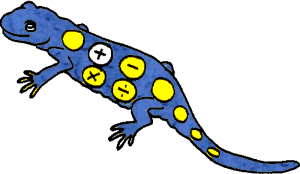
Welcome to the our Addition Subtraction Word Problems 2nd Grade.
Here you will find our selection of free addition and subtraction word problems to help your child learn and practice solving addition and subtraction problems with numbers up to 150.

Addition is a process which children learn quite naturally as soon as they learn to start counting.
During kindergarten and first grade, adding piles of objects together is really important and reinforces
childrens understanding of place value and 1:1 correspondence.
Later on, when children are confident adding piles of objects together, they can progress on to
number lines or counting on in their heads. When children have understood this,
they can begin to learn their addition facts and progress on to column addition.
During 2nd grade, children should be learning the following mental addition skills:
- know their addition facts up to 20;
- mentally adding on 1, 10 or 100 to any 2 or 3-digit number.
For pencil and paper methods, children should be able to:
- add two 3-digit numbers together;
- add together three or four 2-digit numbers.
Addition Subtraction Word Problems
Up to 150
Each sheet consists of adding or subtracting numbers up to 50, 100 or 150.
There is a space on each sheet for working out, using whichever method you wish your child to use.
There are also UK versions of some of the worksheets which use pounds (£) instead of dollars($).
Using these sheets will help your child to:
- recognise addition and subtraction word problems;
- understand the language of addition and subtraction;
- add or subtract with numbers up to 50, 100 or 150.
Addition Subtraction Word Problems up to 50
Addition Subtraction Word Problems up to 100
Addition and Subtraction Word Problems up to 150
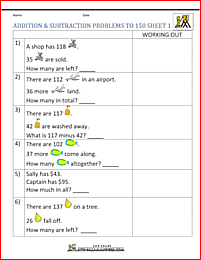
-
Addition Subtraction Problems to 150 Sheet 1
-
Answers
-
PDF version
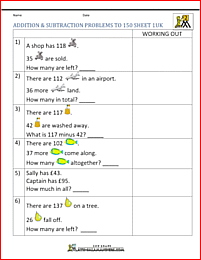
-
Sheet 1 UK Version
-
Answers
-
PDF version
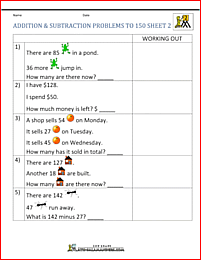
-
Addition Subtraction Problems to 150 Sheet 2
-
Answers
-
PDF version
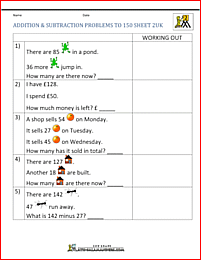
-
Sheet 2 UK Version
-
Answers
-
PDF version
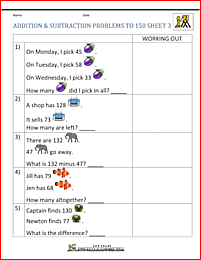
-
Addition Subtraction Problems to 150 Sheet 3
-
Answers
-
PDF version
Looking for some easier worksheets?
Take a look at our Addition and Subtraction word problems for first graders.
On this page, your child will learn to work out basic addition and subtraction word problems with numbers up to 20.
Using the link below will open our main Math Salamanders website in a new browser window.
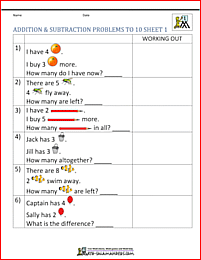
-
1st Grade Addition and Subtraction Problems
More Recommended Math Worksheets
Take a look at some more of our worksheets similar to these.
Mental Addition & Subtraction Worksheets
Addition & Subtraction Facts
The sheets in this section are for children at the beginning of 2nd grade.
They involve the skill of adding and sutracting numbers up to 20.
Using the sheets in this section will help your child to:
- add and subtract numbers up to 20;
- work out addition sums where the total is given but one of the addends is missing.
All the sheets in this section will help your child to develop their speed and accuracy at adding.
Adding Subtracting 1, 10 and 100
This section involves using place value and addition to add either 1, 10 or 100 from any 2 or 3 digit number.
This skill is very important to establish at this grade, as it is a foundation building block from which many other math skills are built.
Using these sheets will help your child to:
- add 1 or 10 to a range of 2 digit numbers;
- add 1, 10 or 100 to a range of 3 digit numbers.
Using these sheets will help to develop your child’s understanding of place value to 1000.
Separate Addition and Subtraction Word Problems
We have created separate pages of addition problems and subtraction word problems!
There are a range of word problems of different levels of difficulty.
An answer sheet is provided for each problem, and also some working out space.
Addition and Subtraction Puzzles
The puzzles in this section mainly focus on adding and subtracting numbers.
The puzzles start with adding and subtracting to 20, and progress on to harder levels and more complex puzzles.
Using the puzzles in this section will help your child to:
- develop their adding and subtracting skills;
- develop trial and improvement strategies;
- improve problem solving skills.
All the sheets in this section will help your child to learn their addition and subtraction facts and become more confident with handling numbers mentally.
How to Print or Save these sheets
Need help with printing or saving?
Follow these 3 easy steps to get your worksheets printed out perfectly!
-
How to Print support
How to Print or Save these sheets
Need help with printing or saving?
Follow these 3 easy steps to get your worksheets printed out perfectly!
-
How to Print support
Math-Salamanders.com

Whether you are looking for a free Homeschool Math Worksheet collection, banks of
useful Math resources for teaching kids, or simply wanting to improve
your child’s Math learning at home, there is something here at the Math Salamanders
for you!
The Math Salamanders hope you enjoy using these free printable Math worksheets
and all our other Math games and resources.
We welcome any comments about our site on the Facebook comments box at the bottom of every page.

